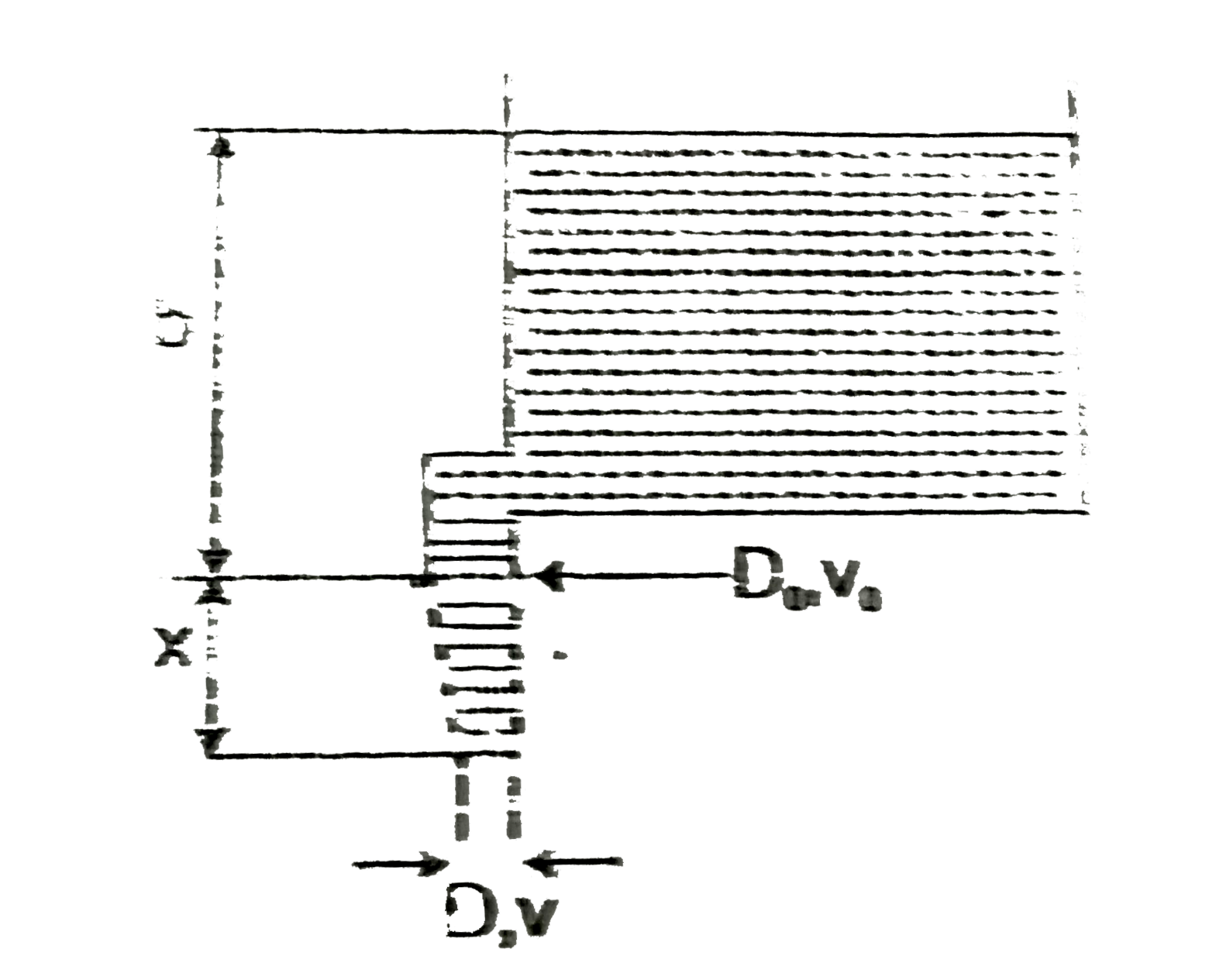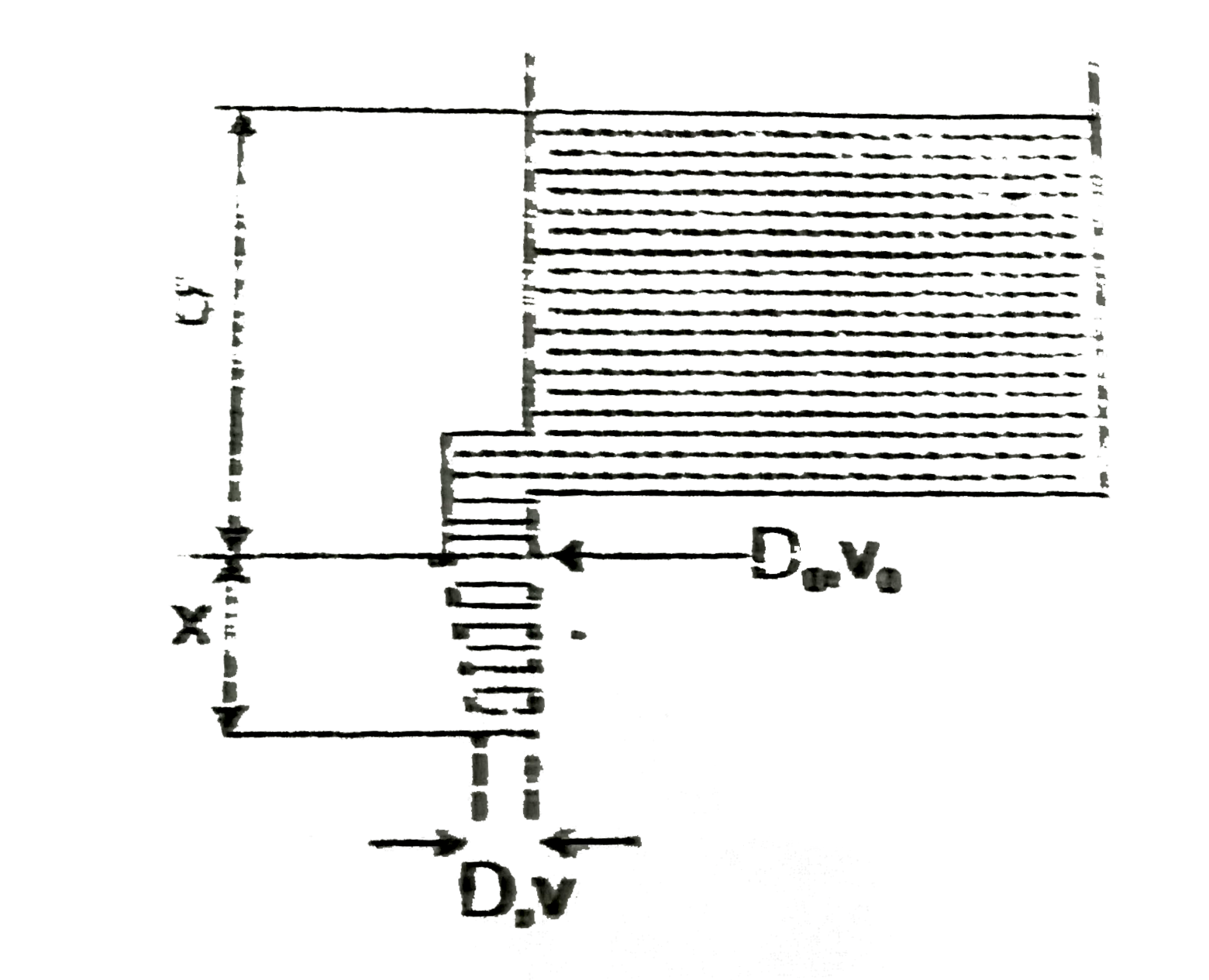The power P delivered by a windmill whose blades sweep in a circle of diameter D by a wind of speed v is proportional to the square of the diameter and the cube of the wind speed. Show that this dependence on diameter and wind speed exist when 100% energy transfer takes place. Also show that
P=π8ρD2v3
Where is ρ the density of air.
Step by step video, text & image solution for The power P delivered by a windmill whose blades sweep in a circle of diameter D by a wind of speed v is proportional to the square of the diameter and the cube of the wind speed. Show that this dependence on diameter and wind speed exist when 100% energy transfer takes place. Also show that P=pi/8 rhoD^(2)v^(3) Where is rho the density of air. by Physics experts to help you in doubts & scoring excellent marks in Class 11 exams.
Topper's Solved these Questions
- BOOK - PHYSICS GALAXY - ASHISH ARORACHAPTER - WORK, ENERGY AND POWEREXERCISE - Discussion Question31videos
WORK, ENERGY AND POWER
- BOOK - PHYSICS GALAXY - ASHISH ARORACHAPTER - WORK, ENERGY AND POWEREXERCISE - MCQ158videos
WORK, ENERGY AND POWER
- BOOK - PHYSICS GALAXY - ASHISH ARORACHAPTER - WORK, ENERGY AND POWEREXERCISE - unsolved1videos
WORK, ENERGY AND POWER
- BOOK - PHYSICS GALAXY - ASHISH ARORACHAPTER - RIGID BODIES AND ROTATIONAL MOTIONEXERCISE - Unsolved Numerical63videos
RIGID BODIES AND ROTATIONAL MOTION
Similar Questions
The blades of a windmill sweep out a circle of area A. (a) If the wind flows at a velocity v perpendicular to the circle, what is the mass of the air passing through in time t? (b) What is the kinetic energy of the air? (c) Assume that the windmill converts 25% of the wind's energy into electrical energy, and that A=30m2, v=36kmh−1 and the density of air is 1.2kgm−3, what is the electrical power produced?
View SolutionThe blades of a windmill sweep out a circle of area A. (a) If the wind flows at a velocity υ perpendicular to the circle, what is the mass of air passing through it in time t? (b) What is K.E. of the air ? (c) Assume that the wind mill converts 25% of the wind's energy into electrical energy , and that A=30m2,υ=36km/h and the density of air is 1.2kg/m3. What is electrical power produced ?
View Solution
Knowledge Check
- Question 1 - Select One
The figure shows the commonly observed decrease in diameter of a water stream as it falls from a tap. The tap has internal diameter D0 and is connected toa large tank of water. The surface of the water is at a height b above the end of the tap.
By considering the dynamics of a thin "cylinder" of water in the steam answer the following: (ignore any reistance to the flow and any effects of surface tansion, given ρw= density of water)

The equation for the water speed v as a funcation of the distance x below the tap will be:Av=√2gbBv=[2g(b+x)]1/2Cv=√2gxDv=[2g(b−x)]1/2 - Question 2 - Select One
The figure shows the commonly observed decrease in diameter of a water stream as it falls from a tap. The tap has internal diameter D0 and is connected toa large tank of water. The surface of the water is at a height b above the end of the tap.
By considering the dynamics of a thin "cylinder" of water in the steam answer the following: (ignore any reistance to the flow and any effects of surface tansion, given ρw= density of water)

Equation for the flow rate, i.e. the mass of water flowing through a given point in the stream per unit time, as funcation of the water speed v will beAvρwπD2/4Bvρw(πD2/4−πD20/4)CvρwπD22DvρwπD02/4 - Question 3 - Select One
The human ciculatory system can be thought of as a closed system of interconnecting pipes through which fluid is continuously circulated by two pumps the two pumps the right and left verticles of the heart, work as simple two-stroke force pumps. The muscles of the heart regulate the force by contracting and relaxing. the contraction (systole) lasts about 0.2s and a complete systole/diastole (contraction/relaxation) cycle lasts about 0.8s. For flood pressures and speeds in the normal range. the volume flow rate of blood through a blood vessel is directly proportional tot he pressure difference over a length of the vessel and to the fourth power of the radius of the vessel. The total mechanical energy per unit volume of blood just as it leaves the heart is E/V=ρgh+P+ρv2
Q. Which of the following is a way to achieve approximately a 45% increase in the volume flow rate of blood through a blood vessel?Aincrease the radius by 10%Bincreasse the cross-sectional area of the vessel by 10%Cdecrease the change in pressure by 10%Ddecrease the speed of flow by 10%
We showed that a particle of charge q and mass m will move in a circle of radius r = mv/|q|B when its velocity →v is perpendicular to a uniform magnetic field →B. We also found that the period T of the motion is independent of speed v. These two results are approximately correct it v << c. For relativistic speeds, we must use the correct equation for the radius:
r=p|q|B=γmv|q|B
(a) Using this equation and the definition of period (T=2π/v), find the correct expression for the period.
(b) Is T independent of v? If a 20.0 MeV electron moves in a circular path in a uniform magnetic field of magnitude 2.20 T, what are (c ) the radius according to , (d) the correct radius, (e ) the period according to, and (f) the correct period?View SolutionThe human ciculatory system can be thought of as a closed system of interconnecting pipes through which fluid is continuously circulated by two pumps the two pumps the right and left verticles of the heart, work as simple two-stroke force pumps. The muscles of the heart regulate the force by contracting and relaxing. the contraction (systole) lasts about 0.2s and a complete systole/diastole (contraction/relaxation) cycle lasts about 0.8s. For flood pressures and speeds in the normal range. the volume flow rate of blood through a blood vessel is directly proportional tot he pressure difference over a length of the vessel and to the fourth power of the radius of the vessel. The total mechanical energy per unit volume of blood just as it leaves the heart is E/V=ρgh+P+ρv2
Q. What is the gravitational potential energy of 8cm3 of blood in a 1.8 m tall man, in a blood vessel 0.3 m above his heart? (Note: The man's blood pressure is 1.3×104N/m2)View SolutionThe human ciculatory system can be thought of as a closed system of interconnecting pipes through which fluid is continuously circulated by two pumps the two pumps the right and left verticles of the heart, work as simple two-stroke force pumps. The muscles of the heart regulate the force by contracting and relaxing. the contraction (systole) lasts about 0.2s and a complete systole/diastole (contraction/relaxation) cycle lasts about 0.8s. For flood pressures and speeds in the normal range. the volume flow rate of blood through a blood vessel is directly proportional tot he pressure difference over a length of the vessel and to the fourth power of the radius of the vessel. The total mechanical energy per unit volume of blood just as it leaves the heart is E/V=ρgh+P+ρv2
Q. During intense exercise the volume of blood pumped per second by an athlete,s heart increases by a factor of 7, and his blood pressure increases by 20%/by what factor does the power output of the heart increase during exercise?View SolutionThe human ciculatory system can be thought of as a closed system of interconnecting pipes through which fluid is continuously circulated by two pumps the two pumps the right and left verticles of the heart, work as simple two-stroke force pumps. The muscles of the heart regulate the force by contracting and relaxing. the contraction (systole) lasts about 0.2s and a complete systole/diastole (contraction/relaxation) cycle lasts about 0.8s. For flood pressures and speeds in the normal range. the volume flow rate of blood through a blood vessel is directly proportional tot he pressure difference over a length of the vessel and to the fourth power of the radius of the vessel. The total mechanical energy per unit volume of blood just as it leaves the heart is E/V=ρgh+P+ρv2
Q. The blood pressure in a capillary bed is essentially zero, allowing blood to flow extremely slowly through the tissues in order to maximize exhange of gases nutrients and waste products what is the work on 200cm3 of blood against gravity to bring it to the capillaries to the brain 50 cm above the heart?View SolutionAn aircraft is moving on a runway for its take off. The wind speed on the lower and upper surface of the wings are 'v' and '√2'v. If the density of air is ρ and surface area of the wing is A, the upward force exerted on thei wings will be
View Solution
